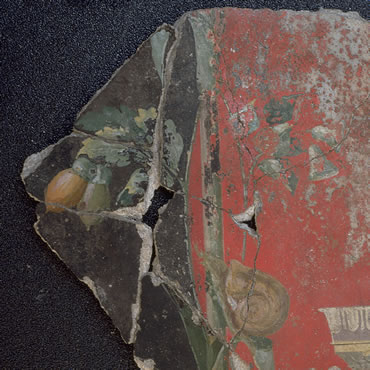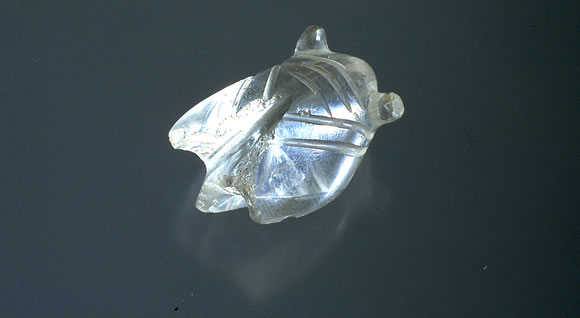1. Man and his environment

With the conquests of the Imperial Age, geographical knowledge was expanded considerably. Thus the people of Pompeii came into contact with different regions and peoples; these experiences are recounted in the texts of the period, such as Pliny's, and depicted in frescoes showing wild and cultivated plants, from Mediterranean regions or imported from far-away lands. The same holds for land and marine animals, shown in a number of portrayals depicting specimens of both local and exotic fauna. Exotic animals and plants were not only painted, but also physically imported, thus contributing to the spread of the species throughout the various provinces of the Roman Empire.
A great number of depictions in sculpture, paintings, and mosaics, combined with assemblages from excavation, have permitted the reconstruction of the fauna in the Vesuvian area in 79 AD. In some pictorial representations, we see numerous wild species: birds, boars, and bears. Of the bears, which were killed in the hunt, remained teeth and other skeletal fragments in archaeological contexts.
Marine animals were often depicted in paintings and mosaics: we recognise crayfish, octopus, dory, seabass, and moray.
There were also impressive sculptures dedicated to hunting, which are verified by the scary-looking horns and tusks found in excavation. Artistic representations didn’t exclude the smaller fauna: on fresco fragments we find butterflies, locusts, and snails.
Marine animals were often represented by Pompeian artists, as in the two large mosaics illustrating many marine species as well as a wrestling match between a crayfish and an octopus. The depiction of fish in art was extraordinarily realistic and allows the precise recognition of species and their comparison to those which exist today. From this comparison emerges an absence of significant change in the appearance and behaviour of marine animals from two thousand years ago.
Pompeians had a considerable knowledge of exotic fauna, depicted by artists for the most part from Alexandria in Egypt. Animals were imported to entertain the public in circus-like spectacles. The peacock, admired for its beauty, was imported from India. Cats, introduced into Italy from Egypt and Libya, were still rare in Pompeii, as in Rome, during the first century AD. Cat skeletons were found in the excavations of the Villa of Oplontis.
The great mosaic of the House of the Faun shows that the inhabitants of Pompeii were familiar with the crocodile, the hippopotamus, the cobra, and sacred ibis. African fauna were also shown, as there were depictions of elephants and antelope. Excavations also revealed the skeleton of a monkey.
The Romans encountered elephants for the first time when King Pyrrhus of Epirus invaded Italy around 280 BC. During the Punic Wars, the Romans saw African elephants, which were later imported for the circus. There are frequent depictions of lions, and more rarely, tigers.
Numerous exotic seashells testify to a flourishing trade with distant regions.
- Provenance: Pompeii, VI,17 (Ins. Occ.), 42 House of the Gold Bracelet, triclinium garden 31 (1985)
- Date: Mid-first century AD



